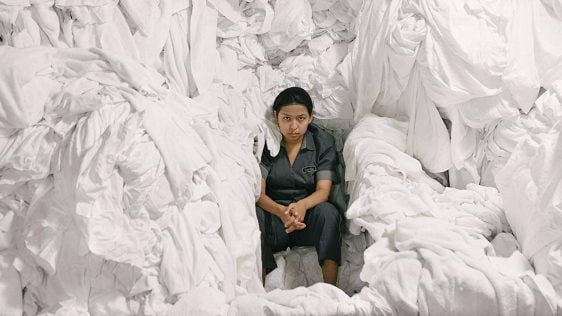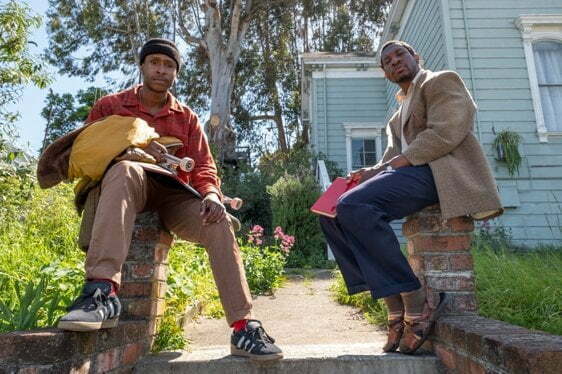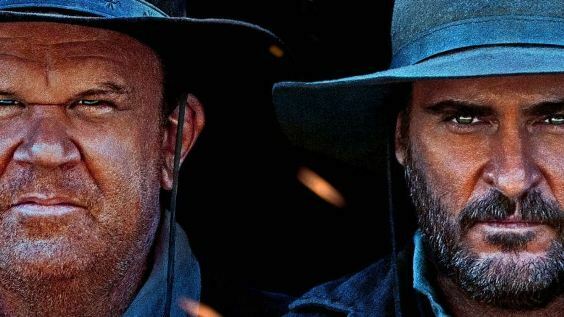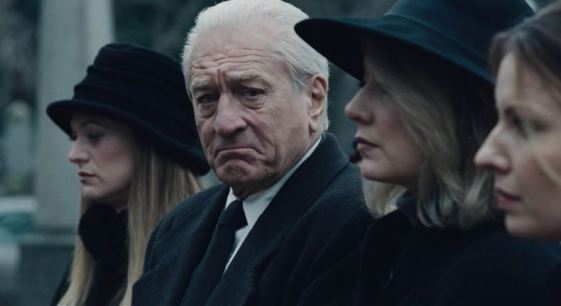
My new year’s resolution for 2019 was to go to the cinema once a week. It’s a sad admission that someone whose career has been mostly built around film should need this sort of a spur, but though films attract me no less than ever they did, cinemas do not. There seems to be something increasingly peculiar about entering a oblong, windowless box, sitting among strangers in rows, watching a story beamed upon a screen, then stepping outside back into an old world. It’s like trying out the same time machine over and over again, only to discover each time that it still isn’t working.
But I made the effort, and I saw some good films that I might otherwise have missed, the usual quota of average ones, and only one half-turkey (memo to Claire Denis for her arty sci-fi adventure, High Life, if you are going to make a film that is half risible and half rather good, put the good half first – that way you won’t have much of the audience walk out before your film improves hugely).
Anyway, here’s a run through a few of the films new and old that most impressed me in 2019.
My film of the year was La camarista (Mexico 2018), in English The Chambermaid. This Mexican drama is the first feature film to be directed by actress Lila Aviles. It is a quiet, acutely observant piece that never put a foot wrong. It tells of a chambermaid (played by Gabriela Cartol), working in an exclusive hotel, who is the model professional but seeks to better herself in the face of great hurdles, including long hours, an arduous journey to work, and caring for her child. It is a tragedy without melodrama. Its victim is trapped (by class, place, upbringing, gender, expectations), with the slight signs of hope the film seems to be leading us towards being overturned by the inevitability of a fate determined by society. Beautifully composed, meticulously observed, achieving such visual delight from mere bedsheets alone, I thought it rather better than last year’s not dissimilar Roma, which reached the heights but also had its questionable moments. The Chambermaid does not.

Only a falling off in in its latter stages prevented The Last Black Man in San Francisco (USA 2019), another directorial feature film debut (Joe Talbot), from being my 2019 winner, and maybe a lot more than that. For the greater part of its running time it is simply tremendous. It is an ingeniously directed tone poem of sorts, set in San Francisco, with the metaphorical story of two friends reclaiming a vintage house that one of them (Jimmie Fails, playing Jimmie Fails, a haunting performance based to some degree on his own life) believes was built by his grandfather. The friendship between the two was so well-drawn, likewise the broader picture of a black society trapped in boxes. Sadly, it fell apart somewhat towards the end, when Fails’ writer friend Mont Allen (wistfully played by Jonathan Majors) puts on a play which is a rant that doesn’t work and ends with the big reveal about the ownership of the house, which lessens the whole exercise. The film then takes an age to conclude, as though the filmmakers couldn’t quite make themselves let their work go. But Hamlet has a weak play-within-a-play and is still Hamlet. It is a remarkable film, memorable for its precise depiction of male friendship, and some dazzling visual coups by director Talbot, who is a talent and a half. It also boasts an exceptional score by Emile Mosseri, supplemented by piquant use of others’ music, from Michael Nyman to Jefferson Airplane.

Neither The Chambermaid nor The Last Black Man in San Francisco seems to have hung around for long in the cinemas, at least in this country. Completing a trio of fine films that stayed around for too short a time, was The Sisters Brothers (USA 2018). This is a mournful western, directed by Jacques Audiard, with the standard violence (with added boom to the guns, if you are in a cinema of course), which gets more complicated through unexpected alliances and weaknesses. After an unclear first thirty minutes, the characters and their dilemmas start to grip. The leads are John C. Reilly and Joaquin Phoenix as the eponymous assassin brothers Eli and Charlie Sisters, but I most liked Riz Ahmed as the chemist who finds a way of using pungent chemicals in prospecting for gold, but also persuades people of a perfect society. A well-made, distinctive and thoughtful film. Just a shame about the silly title, inherited from the source novel.

Another prime example of American cinema, though one that gained a great deal more attention, was Martin Scorsese’s The Irishman (USA 2019). I wrote recently about the experience of watching the film on my phone rather than in a cinema, specifically because Scorsese asked us not to. In truth the experience was awkward, so maybe I’ll try again soon on the TV screen at least, but the exercise proved (to me) that films don’t have to look big to be great. It is a film of wisdom and experience, whose tricksy de-ageing of its lead performers (Robert De Niro, Al Pacino, Joe Pesci) not only ends up tolerable but is revealed as integral to the filmmaker’s subtle design. It shows how vain we are ever to suppose that the time machine could ever work.
Turning to older films, I saw a remarkably varied bunch as part of the FOCAL archival film restoration award, for which I have been one of the judges for quite a few years. The judges’ winning choice was Pixote (Brazil 1980), and rightly so – a model restoration of a modern classic brought back to deserved attention, courtesy of the Fondazione Cineteca di Bologna. But I was also drawn to restorations that were less than perfect, because of the challenges both of their original production and then of preserving film elements in less than ideal local conditions. So it was that I treasured Plae Koa (The Scar) (Thailand 1977), a tragic tale of love and peasant life in rural Thailand, directed by Cherd Songsri. It is an exceptional film, not just of historical importance as a key work of its time and place (it is revered in Thailand, and gained some international recognition which originally released), but a model example of how cinema stories function. Refreshing, insightful, inventive, it has that rare timeless quality that all great cinema enjoys, when you feel that perhaps the time machine is operational after all.

I also greatly admired Chronique des années de braise (Chronicle of the Years of Fire) (Algerian 1975), of which I knew nothing beforehand, yet it had won the Palme d’Or at Cannes in 1975. A remarkable film, nakedly partisan, but with an epic sense that makes a film such as Lawrence of Arabia seem shallow by comparison. It’s the difference between show and feeling. Another impressive example from a less generally recognised corner of world cinema was Minsa’y Isang Gamu-Gamo (Once a Moth) (Philippines 1976), a combination of family drama and national defiance that is very well performed and is clearly of great importance to Philippine cinema. It tells of how the members of two Filipino families torn between the desire to emigrate to the United States and loyalty to race and nation. Not a great restoration, alas, but a powerful assertion of identity, whose impact on audiences at the time must have been considerable.
2019 was the year in which, after an engineer came and tweaked the satellite dish, that I discovered the vintage film and TV channels I had been missing. Most of the good people I know were talking about the historical gems appearing Talking Pictures TV, which sounded too good to be true. But good it is, astonishingly so, alongside the peculiar but compelling Retro Movies, which screens spaghetti westerns of execrable print quality next to startlingly fresh copies of old favourites (an evening that was to have been dedicated to work this week was far better employed watching His Girl Friday yet again). The experience has been mixed, in that some old, obscure favourites whose memory I had cherished – Victor Saville’s Storm in a Teacup (UK 1937), for instance – now look painfully inadequate, while others – Victor Saville’s Dark Journey (UK 1937), both films starring Vivien Leigh – which I never had the chance to see before, is every bit as stylish and romantic as its contemporary reputation would suggest. Time takes away, and time on occasion rewards.

Of the many films on Talking Pictures TV that I saw over the year, or part saw (repeat showings have encouraged a habit of seeing one half of a film on one evening, the other on the next – and not necessarily in the right order), one stood out in particular. A Touch of Love (UK 1969), directed by Waris Hussein, is based on Margaret Drabble’s The Millstone. The story of a young London woman’s journey to through disappointing romance to single motherhood and self-determination looks slight, but it is extraordinarily well-observed.
The extraordinariness lies partly in Drabble’s astute adaptation from her novel, in which she understands – as novelists adapting their own work for the screen tend not to do – that faces have to do the work that words took on previously. This wise self-effacement is complemented by a performance of considerable subtlety by Sandy Dennis. She not only gets her London accent spot on, but shows a person working her way through disillusionment to independence in her eyes alone. Others speak; she learns. Ian McKellen is a little too callow (as an unlikely BBC announcer and seducer) in his feature film debut; there is a scene in which Dennis’s character loses her temper in a hospital which seems to serve no purpose at all; it has some small absurdities (congratulating someone on gaining their PhD is just what you would expect from a Margaret Drabble novel but doesn’t come across so well on the democratic screen). But on its own terms it works, an acute observation of time, place and change. And there are some great scenes inside the British Museum round reading room as well.
Maybe the time machine is there after all, masquerading as that box in the living room.